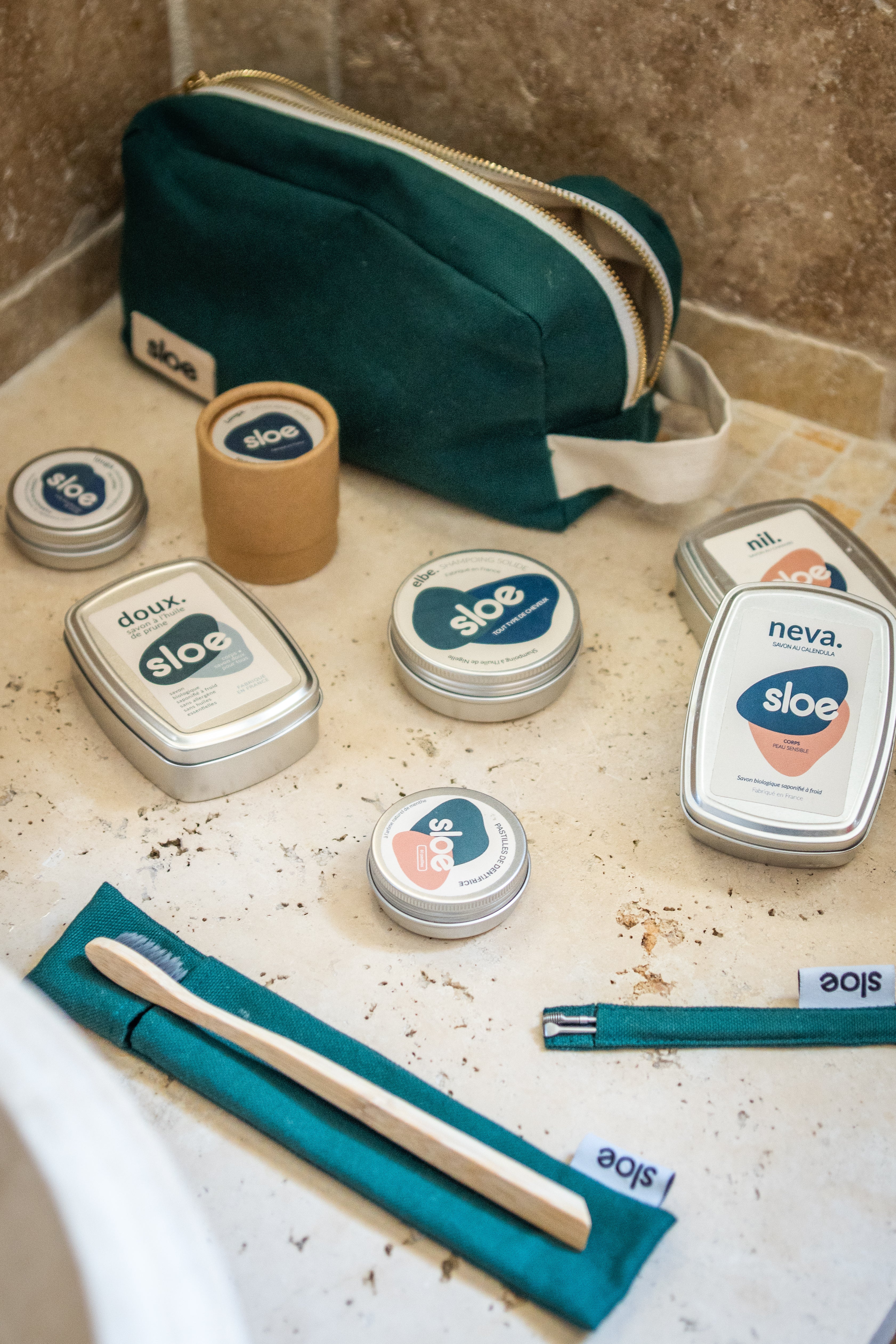
Zero waste objective: reduce plastic consumption in the bathroom
The bathroom is one of the spaces in our daily lives that still generates a large quantity of plastic. Cotton swabs, shower gels, shampoo bottles, make-up remover cottons or disposable razors, these products, often for single use, have a significant impact on the environment. How to reduce your plastic consumption in the bathroom? In recent years, many zero waste alternatives are flourishing in the world of cosmetics.
What is the plastic consumption of a bathroom in France?
Plastic experienced considerable growth in the 1960s, thanks to the development of the petrochemical industry. At the time, it was an innovative material that revolutionized the global economy. The consumption of single-use products is exploding, and with it, the production of waste around the world. Today, the destructive effects of plastic on biodiversity no longer need to be proven.

In France, plastic production increased by 7.8 % from 2016 to 20171. A fact that has repercussions even in the oceans since each year, nearly 11,200 tonnes of plastic are dumped on the French Mediterranean coasts (2 ). Ocean pollutions is such that a seventh continent is made up entirely of plastics and microplastics (1.6 million km² ) is currently drifting in the Pacific Ocean.
Reduce your plastic consumption for a more responsible bathroom
In France, only 22% of plastic waste are now recycled (3). The bathroom is one of the spaces in our interiors that generates the most plastic in our daily lives. Indeed, many plastics remain impossible to recycle and are then incinerated or exported. Although their management tends to improve, the waste that is best recycled remains that which is not produced. “All recycling” is an attractive option, but it is still far from being applicable today.
|
|

|
Like a number of young brands, we are committed to developing packaging-free products and accessories . By committing to this zero waste approach, we encourage the reduction of plastic consumption in the bathroom .
How to reduce your plastic consumption in the bathroom?
Toothbrush and toothpaste
The toothbrush is an essential accessory in our bathroom. For good reason, having good dental hygiene requires daily use. Although the offer tends to diversify, most of the toothbrushes offered in supermarkets are made of plastic. Thus, nearly 17 billion toothbrushes are produced each year around the world.
At sloe, we offer a toothbrush in moso bamboo, as well as a beech wood toothbrush, whose handles are fully compostable. The case that protects them is made from scraps of organic cotton fabric. In order to push our zero waste approach even further, we have developed a solid toothpaste , which comes in the form of pellets. An ideal alternative to the tube of toothpaste, often made exclusively of plastic materials.
Solid soap and shampoo
Commonly used shower gels and shampoos are stored in plastic bottles. Very thick, they represent one of the main sources of plastic in our bathrooms. According to the Grenoble Local Energy and Climate Agency, each French household produces around three kilos of packaging from this type of hygiene product.
If they are a source of plastic, shower gel and shampoo are easily replaceable in our daily lives. Many solid alternatives exist, often without packaging. The soap gradually finds its place on the edge of our sink, while the solid shampoo< span style="font-weight: 400;"> is gradually becoming more popular.
Make-up remover cottons and cotton swabs
The cotton from which makeup remover pads and cotton swab heads are made often comes from distant regions. This plant, for which global demand is only increasing, requires between 7,000 and 29,000 liters of water to produce one kilo. This is without counting the fuel needed to transport the material to Europe, as well as the plastic packaging that allows it to be stored.
However, easy-to-use and inexpensive alternatives exist. Make-up remover pads are easily replaced by washable squares, which are just as effective. For cotton swabs, there are plenty of choices: oriculis (made of wood), stainless steel cotton swabs or silicone, bamboo wadded sticks, etc. So many possibilities that limit the production of plastic waste in our bathrooms.
Hygienic protections
Hygienic protection is an undeniable source of waste in our bathrooms. Each menstruating person uses between 10,000 and 15,000 during their lifetime, which equates to nearly 120 kilos of non-recyclable waste .
Fortunately, alternatives that are both healthier and more environmentally friendly are developing. The cup, for example, has a lifespan of about five years, if not more. Washable pads and menstrual panties are now appearing, revolutionizing daily life during periods. Thus, choosing to opt for reusable hygienic protection allows you to avoid the production of several kilos of additional waste.
Shavettes , epilators or safety razors
The disposable razor is an accessory present in almost every bathroom. Mainly made of plastic, it is difficult to recycle. However, according to the Planetoscope website , 11 million razors are sold every day around the world!
For people who regularly shave their beard or mustache, the safety razor or the shavette are two accessories that easily replace a classic razor. It is also suitable for people who shave their legs, bikini line or armpits. As for theepilatorthis may be a more durable option. It is also possible to make your own hair removal wax, often softer and less aggressive than certain industrial products.
Plastic bottles, hygienic protections, disposable razors or toothbrushes, the bathroom < span style="font-weight: 400;">remains one of the most important sources of plastic in our daily lives. However, many alternatives exist, each one more innovative than the other. Sometimes expensive to purchase, they then turn out to be much more economical in the long term.
At sloe , we support you in this process by offering you completely zero waste products and accessories . A first gesture, which allows us to limit our impact on the environment and reduce the production of plastic waste in our bathrooms.

Sources
1: Pierre Gilbert, “ “Plastic production will increase by 40% in the next 10 years to come” — Interview with Jacques Exbalin » [archive], The wind rises, June 17, 2019.
2: Sylvie Burnouf, “Every year, 11,200 tons of French plastic waste pollute the Mediterranean” [archive], Le Monde, June 7, 2019.
3: General Commission for Sustainable Development, “The environment in France in 2019: Summary report » [archive], October 28, 2019, p. 149-150.





